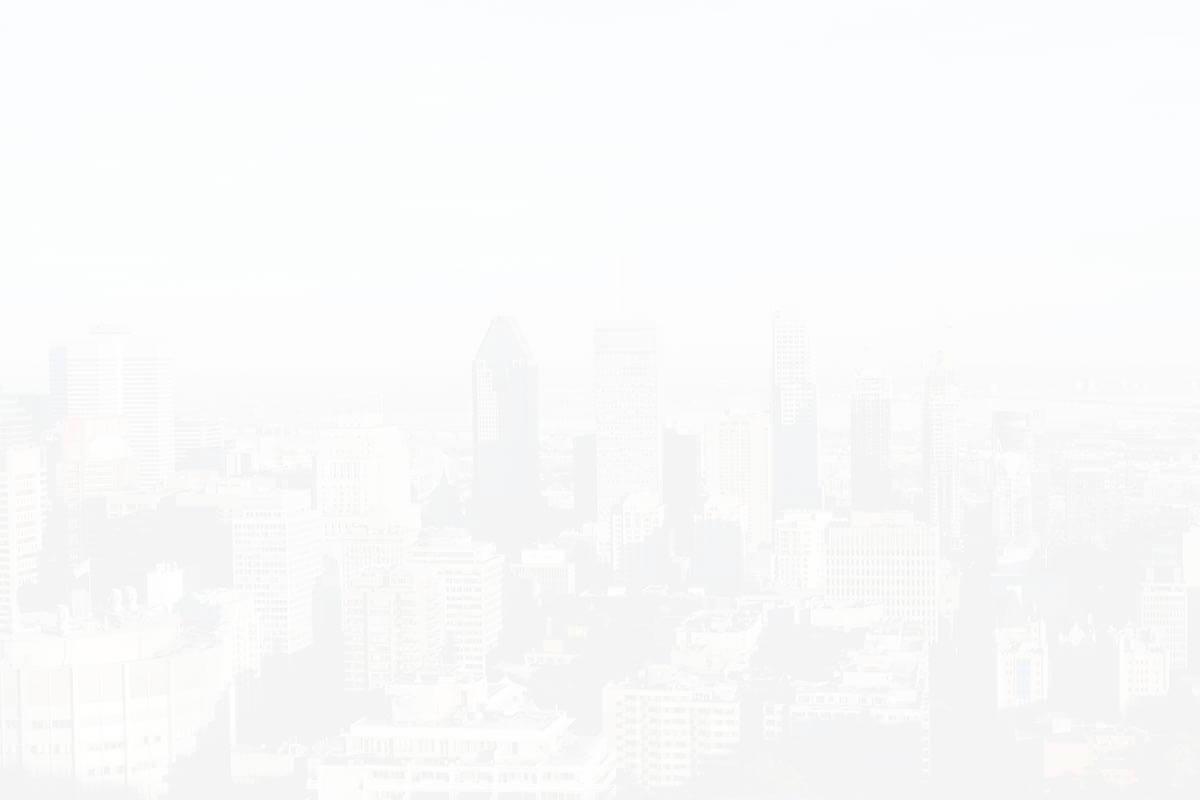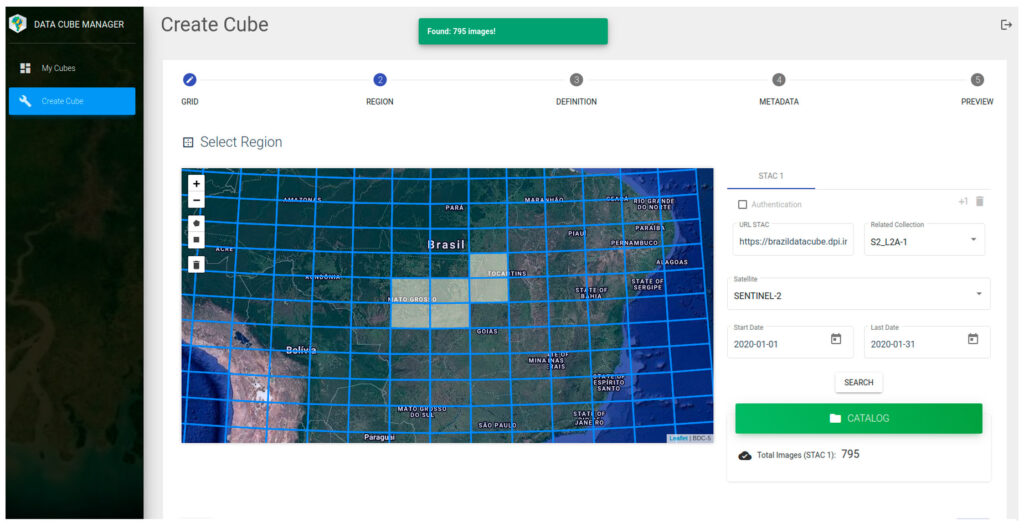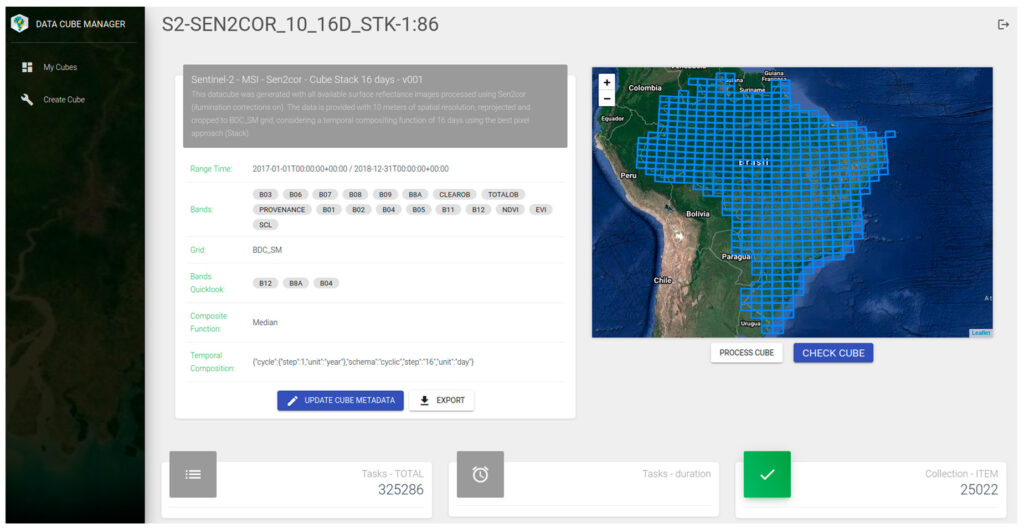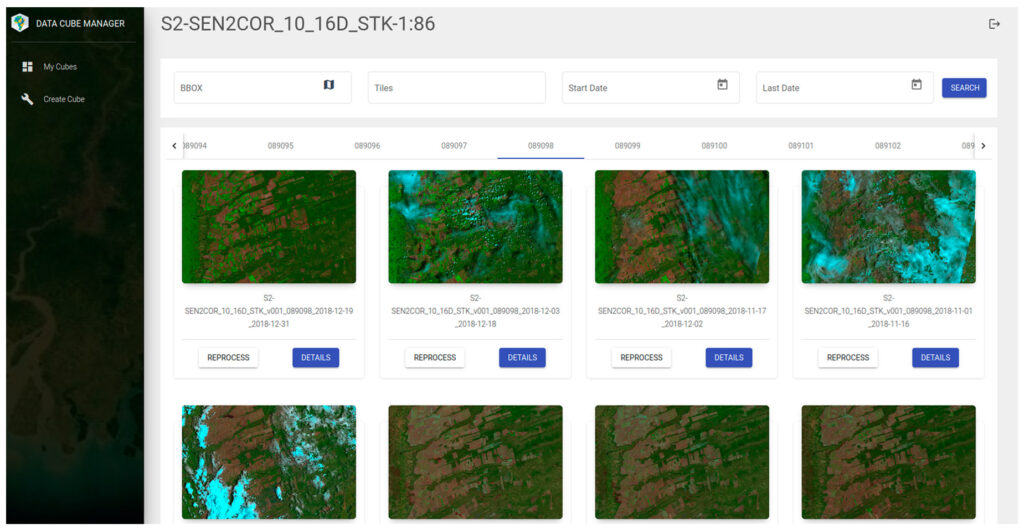

Data Cube Builder is a framework to generate Earth Observation (EO) Data Cubes on-demand to work both on-premise and on-cloud AWS.
Basically, the data cube creation consists of the following steps: Warp and Temporal Compose. The Warp step consists in cropping and mosaicking all images that superimpose a target tile of the common grid, for a specific date. This spatial mosaic is reprojected to the target tile reference system and all bands are resampled to a determined spatial resolution through a bilinear function, except for quality assessment band, which is resampled using nearest neighbor to avoid changes on the image values. The result is called Identity Data Cube.
The Data Cube Builder also supports temporal composition functions, which allow generating regular data cubes. The most used function is `STACK`, which consists in aggregating pixels from all images in the time interval according to each image quantity of valid pixels. The STACK composition can be seen in the figure below.

The temporal composition functions can be found in:
After that, the Data Cube Builder calculates the vegetation index NDVI, EVI and quality bands such:
Cube Builder Architecture on AWS
The Data Cube Builder on top of AWS consists in the following structure:

Image gallery




Associated publications
The Brazil Data Cube team has just registered four software systems developed in the project with the National Institute of Industrial Property (INPI). The number of computational systems registered with INPI is one of the productivity indicators of the National Institute for Space Research (INPE) and its postgraduate courses. The registered systems are: (1) Web …



